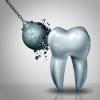
Breaking News
 Three Bob Ross Paintings Sold for $600,000 at Auction in Fundraiser for Public Television
Three Bob Ross Paintings Sold for $600,000 at Auction in Fundraiser for Public Television
 New Gel Regrows Dental Enamel–Which Humans Cannot Do–and Could Revolutionize Tooth Care
New Gel Regrows Dental Enamel–Which Humans Cannot Do–and Could Revolutionize Tooth Care
 Delta Airlines Treats Teens to Free 'Dream Flights' Inspiring Many to Become Pilots and Engi
Delta Airlines Treats Teens to Free 'Dream Flights' Inspiring Many to Become Pilots and Engi
 "Every reserve currency has COLLAPSED, the US dollar is next" We better buckle up!
"Every reserve currency has COLLAPSED, the US dollar is next" We better buckle up!
Top Tech News
 Blue Origin New Glenn 2 Next Launch and How Many Launches in 2026 and 2027
Blue Origin New Glenn 2 Next Launch and How Many Launches in 2026 and 2027
 China's thorium reactor aims to fuse power and parity
China's thorium reactor aims to fuse power and parity
 Ancient way to create penicillin, a medicine from ancient era
Ancient way to create penicillin, a medicine from ancient era
 Goodbye, Cavities? Scientists Just Found a Way to Regrow Tooth Enamel
Goodbye, Cavities? Scientists Just Found a Way to Regrow Tooth Enamel
 Scientists Say They've Figured Out How to Transcribe Your Thoughts From an MRI Scan
Scientists Say They've Figured Out How to Transcribe Your Thoughts From an MRI Scan
 SanDisk stuffed 1 TB of storage into the smallest Type-C thumb drive ever
SanDisk stuffed 1 TB of storage into the smallest Type-C thumb drive ever
 Calling Dr. Grok. Can AI Do Better than Your Primary Physician?
Calling Dr. Grok. Can AI Do Better than Your Primary Physician?
 HUGE 32kWh LiFePO4 DIY Battery w/ 628Ah Cells! 90 Minute Build
HUGE 32kWh LiFePO4 DIY Battery w/ 628Ah Cells! 90 Minute Build
 What Has Bitcoin Become 17 Years After Satoshi Nakamoto Published The Whitepaper?
What Has Bitcoin Become 17 Years After Satoshi Nakamoto Published The Whitepaper?
Hydrogen production

As of 2020, the majority of hydrogen (∼95%) is produced from fossil fuels by steam reforming of natural gas and other light hydrocarbons, partial oxidation of heavier hydrocarbons, and coal gasification.[1][2] Other methods of hydrogen production include biomass gasification, zero-CO2-emission methane pyrolysis, and electrolysis of water. The latter processes, methane pyrolysis as well as water electrolysis can be done directly with any source of electricity, such as solar power.
The production of hydrogen plays a key role in any industrialized society, since hydrogen is required for many essential chemical processes.[3] In 2020, roughly 87 million tons of hydrogen was produced[4] worldwide for various uses, such as oil refining, in the production of ammonia through the Haber process, and in the production of methanol through reduction of carbon monoxide. The global hydrogen generation market was valued at US$135.94 billion in 2021, and expected to grow to US$219.2 billion by 2030, with a compound annual growth rate (CAGR) of 5.4% from 2021 to 2030.[5]

 Unbanked In A Connected World
Unbanked In A Connected World

